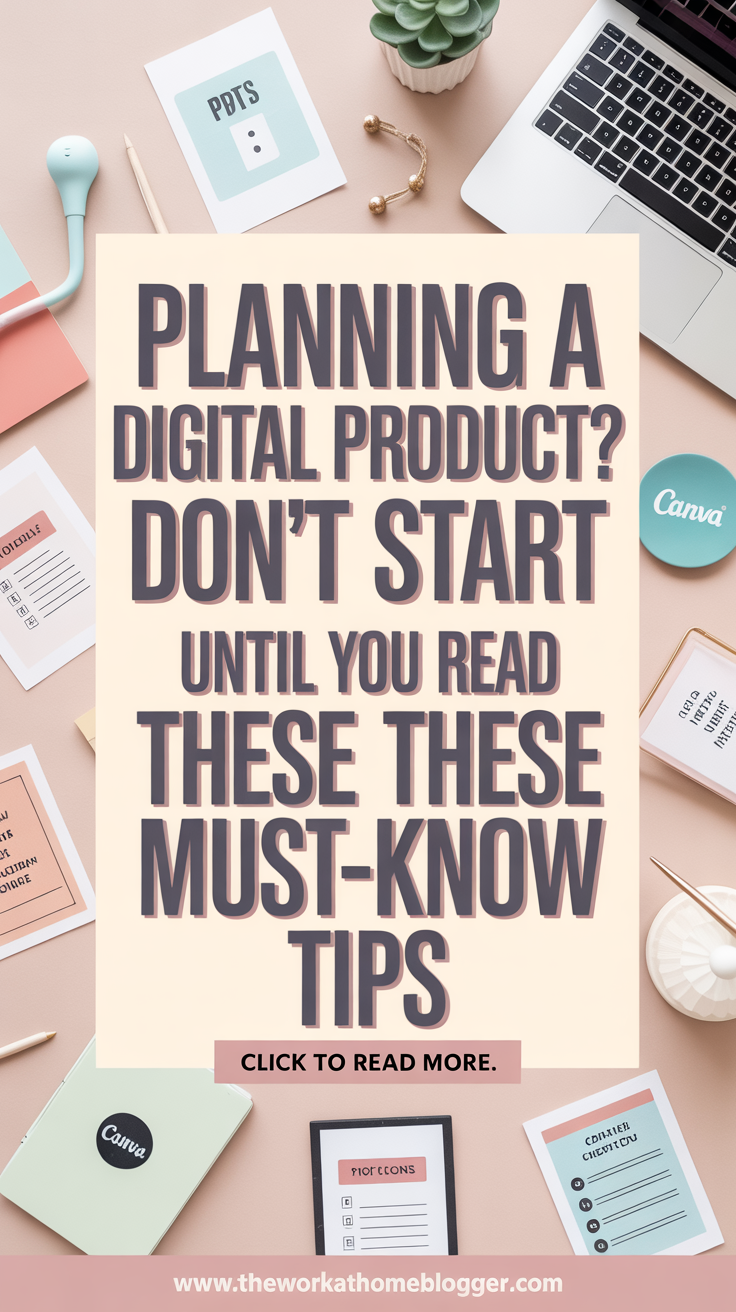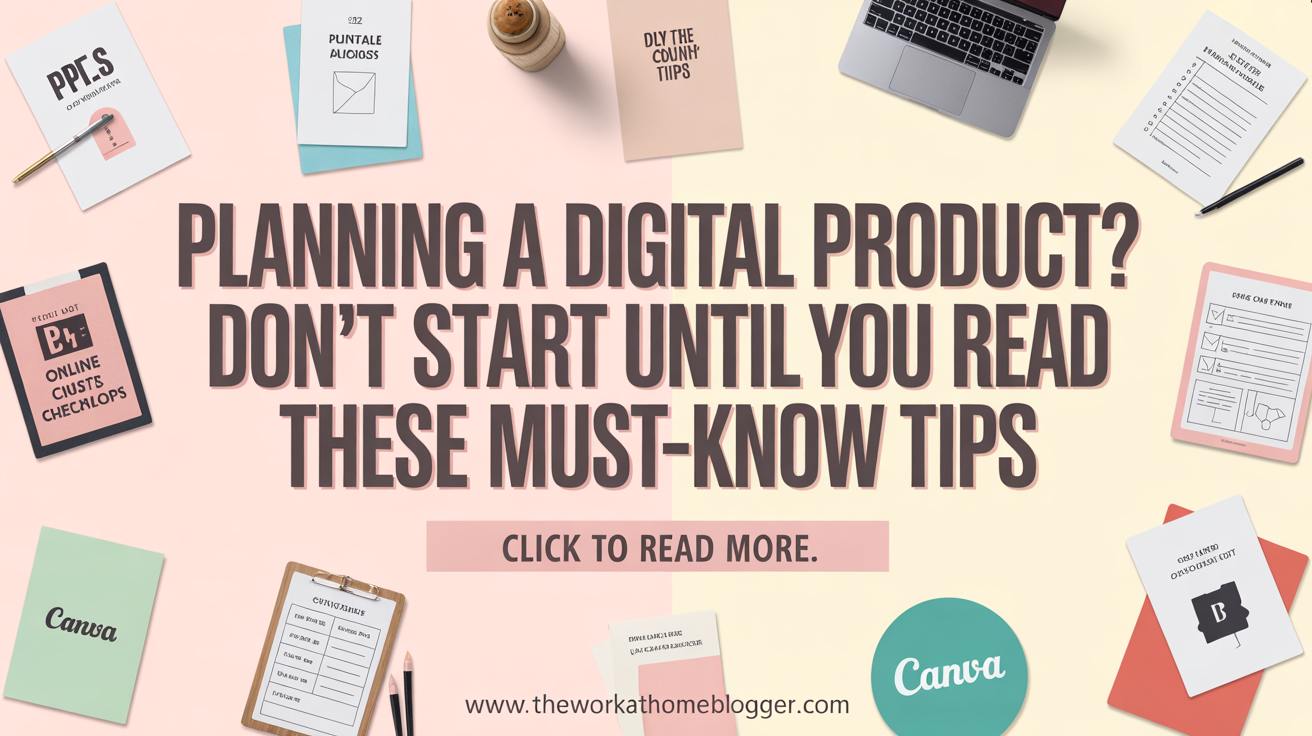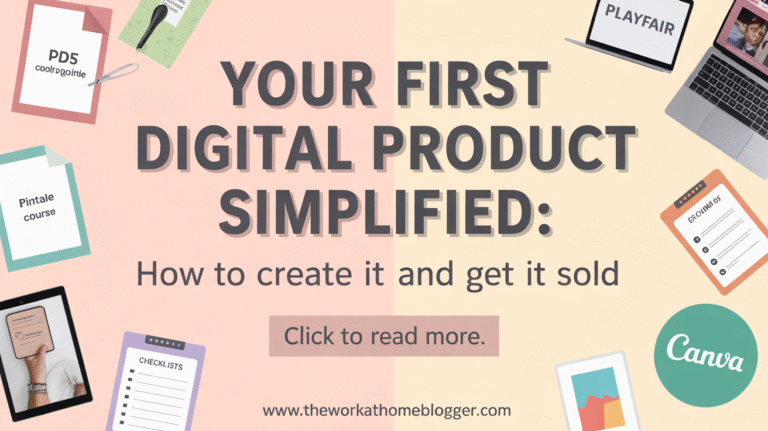When planning a digital product, you need to carefully assess several factors to ensure its success. First, define your target audience and their needs, as this will drive your design and functionality choices. Next, consider the budget and resources available; this can significantly impact your project’s scope. Additionally, market research is imperative to stay ahead of the competition and identify gaps in the market. Finally, don’t overlook the importance of user experience and testing; a product that meets user expectations is more likely to thrive.
Key Takeaways:
- Define the target audience and understand their needs to tailor the product features effectively.
- Prioritize a clear roadmap that outlines development phases, timelines, and resource allocation to ensure smooth execution.
- Incorporate feedback loops throughout the development process to adapt to user input and improve the overall user experience.

Defining Your Product Vision
A well-defined product vision serves as your guiding star throughout the development process. I focus on creating a clear and compelling statement that encapsulates your product’s core purpose and long-term impact. This vision should inspire your team, communicate the value you aim to deliver, and align all efforts toward achieving specific goals. Visualize where your product fits into the larger market landscape and how it empowers users to solve their problems. A powerful vision can transform a simple idea into a meaningful solution.
Identifying Target Audience Needs
Understanding your target audience’s needs is fundamental to creating a relevant digital product. I investigate user research, survey feedback, and direct interviews to gather insights. By identifying pain points and preferences, you can tailor features that resonate with them. For example, a productivity app might focus on minimizing distractions if users express frustrations over inefficiency. Knowing what drives your audience allows you to shape features that genuinely meet their expectations and enhance their experience.
Aligning Product Goals with Market Demand
Aligning your product goals with market demand requires thoroughly analyzing industry trends, competition, and customer behavior. I often employ techniques such as SWOT analysis (Strengths, Weaknesses, Opportunities, Threats) to gauge my product’s position within the market. This step ensures that your objectives are not just based on personal vision but also on tangible data. For instance, during the initial product planning phase, I recommended that a startup focused on sustainability conduct extensive research to determine how increasing eco-consciousness among consumers could shape their product features and marketing strategies. This alignment fosters relevance and strengthens market acceptance, ultimately driving your product’s success.
Navigating the Technical Landscape
Charting your way through the technical landscape requires a firm grasp of the available technologies and how they align with your product vision. You’ll encounter an array of tools, programming languages, and frameworks, each with strengths and weaknesses. Assessing your team’s expertise, potential integration points, and long-term maintenance will save you from pitfalls that can arise later in development.
Platform Selection Insights
Choosing the right platform is imperative for your digital product’s success. Whether you opt for web, mobile, or hybrid solutions, consider user experience, budget constraints, and development timeline. Evaluate platforms based on how well they can grow with your needs, ensure security, and facilitate updates.
Scalability vs. Feasibility: Finding the Balance
Achieving a balance between scalability and feasibility often shapes the foundation of sustainable growth. Projects falter when teams overcommit to scalable architectures that exceed immediate capabilities, leading to wasted resources and burnout. Focus on building a robust minimum viable product (MVP) that is manageable and sets the stage for future expansion.
Many startups grapple with the allure of scalability, often envisioning their product at a massive scale before it has even launched. In my experience, prioritizing feasibility—deploying an MVP that meets core user needs—allows for iterative improvements. For instance, a same-day delivery service that initially operates within a single city can refine its logistics before expanding to multiple regions. Balancing immediate functionality with goals for growth can lead to a more resilient and adaptable digital product strategy. By focusing on achievable milestones, I can create a strong foundation for scalability that pays off in the long run.
Financial Blueprint: Budgeting for Success
A comprehensive financial blueprint sets the stage for your product’s viability and long-term success. An adequate budget accounts for development costs and factors in marketing, operational expenses, and unforeseen contingencies. Use a detailed financial plan to ensure that all areas of your digital product are adequately funded, allowing you to pivot when unexpected challenges arise. By establishing a solid foundation in your financial strategy, you can significantly increase the likelihood of your product thriving in the competitive digital landscape.
Estimating Development Costs
Accurate estimation of development costs is vital for successful budgeting. To get a clearer picture of the expense, begin by breaking down the project into specific components, such as design, development, and quality assurance. Factor in salaries for your team, resources, and any tools or software needed to complete the project. It’s advisable to research market rates for developers based on your location and the project’s complexity, ensuring that you’re financially prepared for the development phase.
Incorporating Pricing Strategies Early
Incorporating pricing strategies early in the planning process can significantly influence your product’s perceived value and market success. Analyzing competitors’ pricing models while considering your target audience’s willingness to pay will help you establish a price point that aligns with market expectations. Additionally, I’ve found it beneficial to explore pricing tiers or subscription models that can cater to varying user needs, enabling you to capture a broader customer base from the outset.
Exploring different pricing models upfront can unlock new revenue streams while positioning your product strategically in the marketplace. For instance, a tiered pricing model can accommodate budget-conscious users and those willing to invest more for premium features. Consider implementing a freemium model, where basic features are free, enticing users to upgrade for advanced functionalities. This approach provides valuable insight into customer preferences and contributes to a sustainable revenue model over time.
The User Experience Revolution
The evolution of user experience (UX) has fundamentally changed how digital products are conceived and developed. Integrating a comprehensive UX strategy into your planning is non-negotiable in an era where users have zero tolerance for poor experiences. This means understanding what users want and how they feel when interacting with your product. A seamless UX can turn casual users into loyal advocates, emphasizing the pressing need for continuous innovation and simplification in design.
Designing for Engagement and Retention
Engagement and retention hinge on creating interfaces that captivate users while keeping them invested long-term. I focus on intuitive navigation, visually appealing layouts, and user-centric features that resonate with my target audience. Gamification techniques, personalized content, and push notifications can enhance user interaction. A successful design sparks interest that encourages users to return, making the experience enjoyable and addictive.
The Role of Feedback in Iterative Design
Collecting user feedback is a cornerstone in the iterative design process. Constructive criticism from real users offers invaluable insights that can steer your product away from potential pitfalls and towards improvement. By continuously adapting based on user experiences and needs, I can develop a product that truly resonates and delivers value over time.
The iterative design process thrives on a cycle of *test*, *learn*, and *adapt*. For instance, employing tools like surveys or usability tests allows me to gather direct input on what is and isn’t working within the product. This real-time feedback loop shapes modifications and enhancements that can dramatically improve the overall user experience. A/B testing, a method that compares two product versions to determine which performs better, is a practical example of using feedback to drive user-centered changes. Ultimately, embracing user feedback fosters a better product and cultivates lasting relationships with your audience, as they feel heard and valued in the development process.
Launch Strategies that Make an Impact
Executing a successful launch involves meticulous planning and strategic execution. A well-thought-out launch strategy not only introduces your product to the market but also captures the attention of potential customers, leading to increased engagement and sales from day one. I always advise keeping your target audience at the forefront, ensuring your messaging aligns with their needs and desires, ultimately driving adoption and loyalty.
Crafting a Buzz-Worthy Marketing Plan
Generating excitement before launch is crucial for visibility. I recommend creating a detailed marketing plan that highlights your product’s unique selling propositions. Utilize various promotional tactics, including social media teasers, influencer partnerships, targeted email campaigns, and engaging content that encourages sharing. By framing your narrative and creating a sense of urgency, you can foster buzz that translates into strong initial traction.
Timing and Channels: When to Go Live
Selecting the right timing and distribution channels for your launch can significantly influence its success. Analyze market trends, competitor launches, and customer behavior to determine the optimal moment. To maximize exposure and reach, your channel strategy should encompass social media platforms, email lists, and industry-specific communities.
For example, launching during a significant industry event can amplify your message, as attendees are primed for new innovations. Tools like Google Trends can help ascertain peak times for relevant searches, allowing you to align your launch with these patterns. Ensure your marketing materials are tailored for each channel; a distinct approach for Instagram may differ from LinkedIn. This strategy increases your chances of capturing diverse audience segments effectively, thus broadening your overall impact. By meticulously choosing the right timing and channels, you ensure that your product reaches the right people and resonates deeply with them.
Final Words
Drawing together the various elements of digital product planning, it is imperative to consider your target audience, market trends, and technology constraints. To ensure feasibility, you should also evaluate the resources at your disposal, including time and budget. Additionally, keeping user experience at the forefront will guide your design decisions. By reflecting on these key considerations, I am confident you can create a digital product that meets your objectives and resonates well with your intended users.
FAQ
Q: What are the initial steps to consider when planning a digital product?
A: The initial steps include identifying the target audience, conducting market research to understand user needs, and defining clear goals for the product. Gathering insights on user pain points, preferences, and behaviors is crucial to ensuring the product effectively addresses real problems.
Q: How important is budgeting for a digital product, and what should it include?
A: Budgeting is a vital aspect of planning. It should cover development costs, design expenses, marketing, and ongoing maintenance. Allocating resources for user testing and feedback collection is essential to enhance the product based on user experiences.
Q: What role does technology play in planning a digital product?
A: Technology impacts the product’s feasibility, scalability, and overall user experience. Selecting the appropriate tech stack is vital for meeting performance expectations, ensuring security, and facilitating integration with other systems or platforms. Evaluating current trends and emerging technologies also helps in making informed choices.
Q: How can user experience (UX) design influence the success of a digital product?
A: UX design significantly affects user satisfaction and retention. Planning should prioritize intuitive interfaces, accessibility, and responsive design. Conducting user testing throughout the design phase can provide valuable feedback, allowing for adjustments that enhance usability before the final launch.
Q: What strategies should be employed for marketing a digital product post-launch?
A: Effective marketing strategies include creating an engaging online presence, leveraging social media platforms, and utilizing content marketing to reach target users. Building a community around the product through forums or user groups can foster loyalty and ongoing engagement. Paid advertising and partnerships can also enhance visibility and reach a broader audience.







